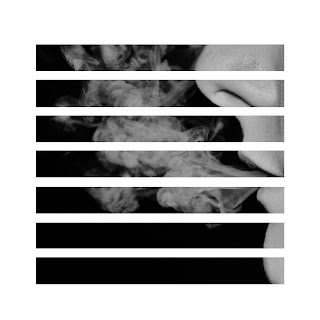For this project i decided to capture myself smoking and a lighter blowing in the wind. I know photos of people smoking isnt original but i wanted to take something thats been done before and make it different to other images, i've done this by changing the colour and the sizes of the images that im using.
My photos before i edited them:
My photos after theyve been edited:
Photo number 1:

I decided to first of all crop this photo so all you got in the picture was part of my face and my mouth blowing out the smoke. I then edited the photo to make it black and white, when looking at the photo i found it to be quite boring just black and white so i then decided on photoshop to cut the image into shapes, i used the grid tool and seperated the image into rows of 4 boxes tall. I think using the effect has made this image more creative and interesting.
Photo number 2:
For this image i didnt have to edit it alot, i wanted the main focus to be on the lighter swaying in the wind, i then edited the colour slightly so the image was slightly brighter. After i had done most of the colour editing i wanted to do something else to make this image more creative and different so i decided to tile the image into 4x4 squares, i did the same process as the picture above but i think that this image is more affective, its more creative and its also an optical illusion.
Photo number 3:
For this image i cropped out most of the image leaving the smoke rising and the lighter flame. When i came across this image i wasnt sure what i wanted to do with it, I knew that i didnt want the full image, so i cropped it. I then started playing with some different effects, first off all i made it black and white but i didnt feel that the image was at its full potentual. I then started messing around with the light and colour and it gave me this image, I really like the effect that ive got. The light flames sharp, the smokes got quite a few different tones and overall i think this image looks more detailed because off the affects i chose.
Photo number 4:
For this image i wanted to just focus on the face so i cropped out the rest of the body. I then made it black and white which gave it a vintage feel which i really like because thats the affect i was going for, i then decided to make this image black and white, i think because the photo is already very simple the lack of colour reflects the simplicity of the photo. I also changed the light setting which made the smoke clearer and you could see the rain falling easier, it made it look like little white specks.
Over all I think that my favourite photo's would be either 2 or 4, I picked these two because theyre both compleatly different to each other. I picked photography 2 because the photo is quite simple but the fact that ive edited the image into little squares makes it more intresting. I also like how simple picture 4 is, i feel that its got quite an elegant feel too it because its so plain and basic.













